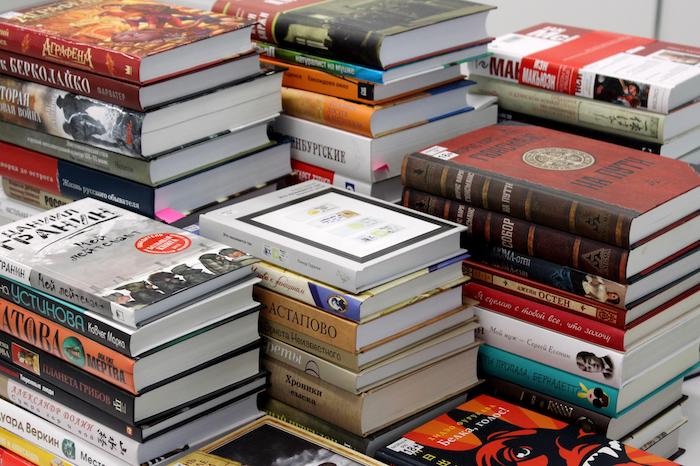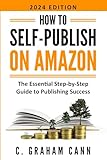Dime Novels at the Beginning of the 20th Century
An excerpt from a book for writers describing the state of the dime novel publishing industry in the early 1900s

If you take a look at a news stand where five and ten cent novels are displayed these days, you will notice a lack of alliteration in the titles. Then, going a little further, if you should skim over the pages of one of the modern thrillers, you would find it free from blood-curdling statements.
The fact is that dime novels are not what they were. Publishers have ceased working over the adventures of the James boys, and along with them have died such characters as Bowery Billy the Bunco Bouncer, Buck Bumblebee the Harlem Hummer, and Hurricane Bill
.
Only two of the old characters have been able to hold their own. These are Nick Carter and Buffalo Bill. But these two have become so tame that they not only eat out of the reader's hand, but while doing so deliver lectures on temperance, morality and the triumph of truth.
As an illustration of this change it may be said that one of the writers for the Nick Carter series is a woman, and that she was recently reprimanded by the publishers for killing eleven persons in the first chapter. It was too bloodthirsty, they said, for a dime novel.
In the dime novel of to-day the use of the word "damn" is sternly forbidden, as is any profane mention of the name of the Creator. The dime novel villain of these times must say "By heaven!" and "By Jove!" when he swears. Nothing stronger is permitted.
Two firms have practically a monopoly of the dime novel business in the United States. One of these is said to control 70 per cent of the output. A representative of this firm endeavored to explain the other day just why the modern thriller has taken on a moral tone
"It's all due to the demands of the public," he said. "By the public I mean the small boys of America. They aren't so bloodthirsty nowadays as they were when we were youngsters.
"Of course, they still like Indian stories and they like lots of fighting for a just cause, in which right triumphs and evil is ground in the dust. The great growth of the school system in America may be responsible for this. The youngsters probably have their minds trained in the right direction before they start reading fiction, and by that time they won't have anything but good, healthy stuff.
"I've been writing cheap novels for ten years and have had about as good a chance as anybody to observe the change in their style. When I began, famous bandits and cutthroats of all kinds were lauded as heroes. Then the sale of these stories began falling off. An investigation convinced us that the kids of America wanted cleaner reading.
"One firm that had been pursuing the grim art of immortalizing thugs went to the wall. We took another tack in no time and worked gradually around to a better class of stuff. The result was a big jump in our sales. Now we are as careful as any religious paper about what we publish.
"There's an art about the way the modern cheap novel for boys is issued. We have the whole thing systematized in fine shape. In the first place, our field covers just ten subjects. I summarize them as follows:
"2. The boy who succeeds against great odds. This hero goes penniless to a great city and becomes a millionaire.
"3. The humorous boy. He travels, encounters various adventures, and is cheerful and funny through it all.
"4. The boy detective. You know him.
"5. The boy pirate. He's a familiar one, too.
"6. The boy Indian slayer. He usually rescues a beauteous maiden from the redskins.
"7. The boy who blazes a trail. He meets with various adventures in the lumber regions of the Northwest.
"8. The boy reformer. He generally rescues a friend from the clutches of gamblers and puts them out of business.
"9. The boy in history. This hero appears in a series devoted to the Revolutionary War
"10. The boy in the United States army. He goes to the front and fights either Indians or Filipinos.
s.
"Although it is generally supposed that novel reading youngsters delight in tales of bold deeds by pirates, these stories are the least popular of any of the five and ten cent series. They are kept up by us more as a matter of sentiment than anything else. It wouldn't ever do, you know, to knock the pirates entirely out of the novel field.
"All of these facts that I am unrolling about what the boys want in the cheap story line are a very essential part of our business. We are constantly keeping a finger on the pulse of the juvenile public. It is our business to know all about boys. If we lost track of our young patrons we wouldn't be able to tell what they wanted, and then somebody else would come along and put us out of business.
"Figures which we are gathering all the time show us that New York and Chicago are the most fertile fields for cheap novels. We sell more of our stuff in Chicago, however, than we do in New York, notwithstanding the fact that there are 600,000 lads in this city and only 400,000 in Chicago. Our sales are much larger in the central section of the country than in the East.
"All the juvenile stories of this kind that are turned out in America are written by a regular corps of men. There are about fifty of these authors in this country, and most of them live around New York. Once in a while an outsider butts in with a good novel, which is accepted, but such cases are few and far between. The statement that fifty authors control the dime novel output of the United States is not an exaggerated one.
"Of this fifty only one is a woman, and she writes detective stories. She is about thirty-five. She's one of the most bloodthirsty writers we ever had. She's always killing off somebody, and every once in a while she overdoes it.
"Dime novel writers make very good money. Each one of them handles a certain series, and is expected to produce a novel of 30,000 words every week. The sum of fifty dollars is paid for each novel, so the writers make fifty dollars a week. A few of them make a great deal more.
"One of our men has been writing on one character for twelve years. When he began twelve years ago he received forty dollars for writing 20,000 words. Then the length of the novels was increased to 30,000 and his salary was raised to fifty dollars. After he had begun to make a pronounced success out of the series his salary went up in proportion, and now he gets $125 for every story he writes
.
"Another man who occupies an important position with us has written 1,000 short stories and 165 novels in his lifetime. His stories are 28,000 words in length, and his novels average from 60,000 to 120,000 words. That man began writing when he was twelve, and he has never turned out anything but stories of adventure
.
"I have my own troubles sometimes in editing the mountains of stuff turned over to me. A little while ago one of the stories had this: 'The thunder of defiance flashed in his eye.' Now who ever heard of thunder flashing? Well, I knew better, but , it got past me. Another writer was telling of the discovery of a murder. This is what he wrote:
" 'The body, a mass of bruises and sickening cuts, lay near the old blockhouse. Our young hero knelt beside it and found that besides being dead the man was also internally injured.'
"Can you beat that? Well, those are easy ones to catch.
"Are dime novels hard to write? Not at all, but it requires a certain knack. All of the dime novel authors I have ever talked with tell me that when they begin a story they never know what the plot will be. They simply study up a good opening. Then the rest works itself out.
"Taking it all in all the business of writing dime novels has reached a comparatively high plane. The modern author doesn't retire to a garret with a quart of whiskey when he starts out on a story. Instead, he lives with his family in some Jersey village, comes to New York every day, plugs out about 6,000 words and then, goes back home and takes things easy.
"He has instructions to use the best sort of English, to avoid impossible situations and to make his stories as clean as possible. Dime novels have undergone a strange transformation in the last decade. But the publishers are not responsible for it. The small boy worked the change."
Read These Next
Self-Publishing Means Self-Marketing
There are many advantages to self-publishing, but nobody should make the mistake of thinking that it’s easy. Sometimes the writing and the publishing are the easy parts. When that is done the challenge is to put your work into the shop window, where others can see it. With over a million titles on the market, you are up against some stiff competition.
Press Release Primer
Writing a press release can seem daunting, but with these five simple steps you can whip off a great release, and other promotional copy, in a hurry.
Selling Books Through Interviews
William A. Gordon and Stephen Schochet are Hollywood authors and storytellers who, between themselves, have done over 600 radio interviews. Although they work independently, they often share information about specific shows and compare strategies for getting booked. Here they share some of the lessons they have learned about selling books and other media through radio interviews.







 Self-Publishing for Dummies (For Dummies: Learning Made Easy)
Self-Publishing for Dummies (For Dummies: Learning Made Easy) Write. Publish. Repeat. (The No-Luck-Required Guide to Self-Publishing Success)
Write. Publish. Repeat. (The No-Luck-Required Guide to Self-Publishing Success) How to Self-Publish Your Book: A Complete Guide to Writing, Editing, Marketing & Selling Your Own Book
How to Self-Publish Your Book: A Complete Guide to Writing, Editing, Marketing & Selling Your Own Book Self Publishing To Amazon KDP In 2024 - A Beginners Guide To Selling E-books, Audiobooks & Paperbacks On Amazon, Audible & Beyond
Self Publishing To Amazon KDP In 2024 - A Beginners Guide To Selling E-books, Audiobooks & Paperbacks On Amazon, Audible & Beyond Self-Publishing: The Secret Guide To Becoming A Best Seller (Self Publishing Disruption Book 2)
Self-Publishing: The Secret Guide To Becoming A Best Seller (Self Publishing Disruption Book 2) Self Publishing To Amazon KDP In 2023 - A Beginners Guide To Selling E-books, Audiobooks & Paperbacks On Amazon, Audible & Beyond
Self Publishing To Amazon KDP In 2023 - A Beginners Guide To Selling E-books, Audiobooks & Paperbacks On Amazon, Audible & Beyond How to Self-Publish on Amazon: The Essential Step-by-Step Guide to Publishing Success
How to Self-Publish on Amazon: The Essential Step-by-Step Guide to Publishing Success Self-Publisher's Legal Handbook: Updated Guide to Protecting Your Rights and Wallet
Self-Publisher's Legal Handbook: Updated Guide to Protecting Your Rights and Wallet 14 Steps to Self-Publishing a Book
14 Steps to Self-Publishing a Book Self-Publishing Simplified: How to Publish a Book on Amazon KDP for Beginners
Self-Publishing Simplified: How to Publish a Book on Amazon KDP for Beginners